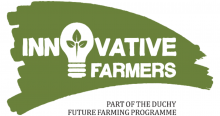Ben Adams - farmer Ben runs a 400 ha arable farm near Bicester, Oxfordshire, growing combinable crops and processing and delivering firewood over the winter. Ben has been trialling intercropping over the last year and hosted a LEGUMINOSE workshop at his farm in June to discuss his trials. Ben planted 9 different trial plots of 2 or 3 species mixes in each to see which combinations worked best both financially and rotationally. He also monitored issues with pests, weeds and disease, to assess how best to manage the different crops, and calculate minimal levels of inputs required.
Imelda Uwase - Researcher Imelda works at the University of Reading. She talks through the research she conducted on 'Exploring plant-soil interactions in cereal-legume intercropping' with The James Hutton Institute & University of Edinburgh and her involvement in the LEGUMINOSE project.
This event is the second in a series of on-farm workshops and webinars planned as part of the LEGUMINOSE project looking at Intercropping of cereals and pulses.
LEGUMINOSE is a Horizon Europe funded project, with UK funding provided by UKRI, investigating plant interactions in a cereal and pulse intercrop. For more information on LEGUMINOSE see their website: https://www.leguminose.eu/. Or watch a recording of the kick-off meeting on YouTube.




